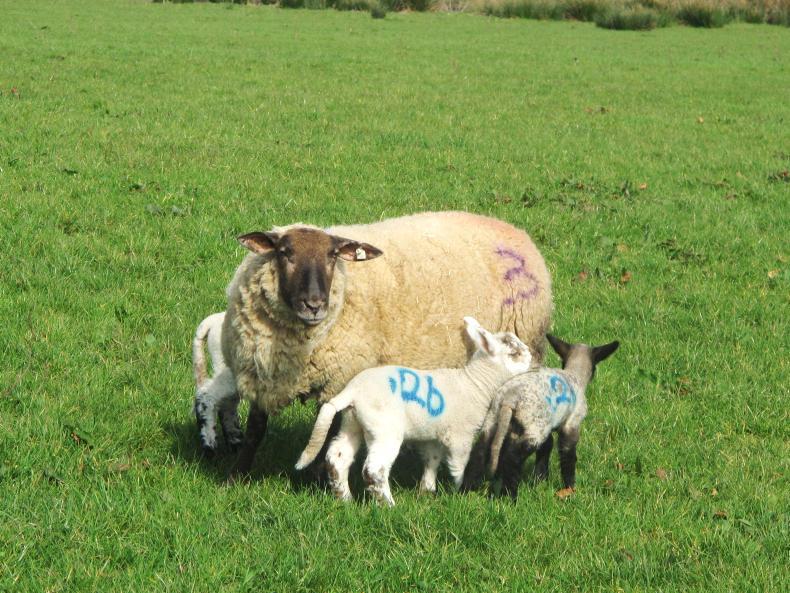High-prolificacy flocks will deliver maximum output per ewe, but if a system is not in place to efficiently handle these extra lambs, then the benefit of pushing litter size can quickly turn to a negative.
This week’s sheep article in the print edition looked at the option of rearing lambs artificially on milk replacer.
It is also possible to operate a system of leaving three lambs on the ewe, but for this to succeed then there are a number of aspects that must be satisfied.
The recommendations take account of extensive research carried out by Teagasc during the period from birth to weaning.
Ewe and lamb condition
The starting point is to ensure that the ewe is in good health and body condition and has enough milk to feed three lambs.
Where any one of these three factors are limiting, then the practice will not work and at least one lamb should be removed and reared artificially, cross-fostered or sold.
Failing to do so will increase the risk of ewes suffering health issues such as mastitis or grass tetany and increase ewe and lamb mortality.
Lambs should also be of sufficient size and condition to fight their own corner. The target is for three lambs weighing upwards of 4kg.
Where there is a major disparity in size and particularly where there is one small lamb that will struggle to compete for milk then the best practice is to remove the lamb at that stage.
A lamb that fails to consume sufficient milk will have a much higher risk of mortality and having their growth stunted.
Facilities
High-prolificacy flocks should also have a higher number of lambing pens in place, as, ideally, ewes with triplet lambs should be left for a longer time frame indoors before letting to grass.
This will ensure each lamb is suckling adequately and reduce the risk of one lamb falling behind from ewes being released too quick.
Feed requirements
Ewes suckling triplet lambs in early lactation have a 10% higher feed requirement than twins, which, in turn, is 25% higher than single-suckling ewes.
As such, ewes rearing triplet lambs must be managed as a separate flock and given preferential treatment. Grass supply should be adequate to offer ewes at least 5cm grass post-lambing, with grass height increasing as lactation and the grazing season progresses.
They should also be offered 0.5kg concentrates daily for at least the first five weeks of lactation. Where weather is challenging and grass utilisation is likely to be poor, then there is merit in offering ewes a higher allocation of 1kg concentrates daily for a short period.
Creep feeding
Teagasc trials carried out in 2000 and 2001 examined the best response to creep feeding. Three levels of creep were fed – 300g from birth to 10 weeks of age; 300g from birth to 14 weeks of age; and in one year 600g was fed to 14 weeks of age.
The effect of creep feeding is shown in Table 1.
Creep feeding to 10 weeks of age resulted in satisfactory weaning weights. However, there was a response to higher feeding rates to 14 weeks of age.
There is a significant difference in weights obtained, but the trial analysis reports very poor grass-growing conditions (and a poor response to creep feeding) in year one of the trial and optimum conditions in year two.
Recent research in Athenry shows comparable weight gain to year two. However, it cannot be emphasised enough that this is dependent on everything going right, high availability of labour and access to very good-quality grass.
A column has been added into Table 1 to show the cost of creep feeding at €300/t.






 This is a subscriber-only article
This is a subscriber-only article










SHARING OPTIONS: